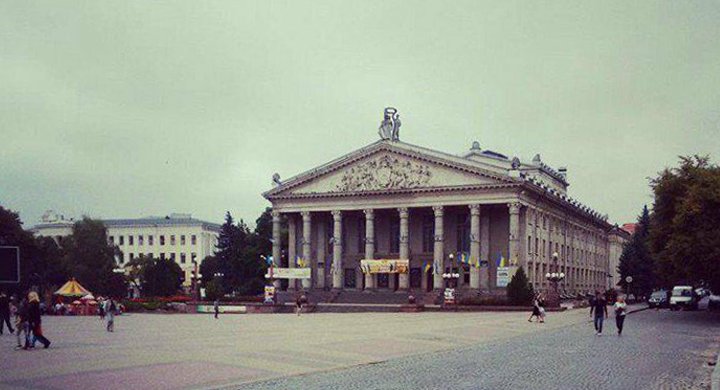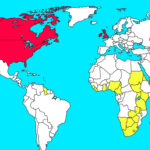In this part of our series ‘My language, my home’, we learn about Ukrainian, a language spoken by 45 million people, and one that most people know only very little about.
By Nataliya Sira / 23.11.2017
Find more texts of the “My language, my home” series here.
Do we often think about how beautiful our language is, how nice it sounds and how clearly it can transmit our thoughts and feelings?
Most people do not attach much importance to their native language and very often the perception of certain characteristics of the native language comes only with the study of foreign languages. It is when we start to learn other languages that we look for compliance with our native language, and sometimes we understand that in our native language there are so many different grammatical or lexical rules that actually do not exist in the foreign language we learn.
I began to think about the wealth of the Ukrainian language only when I learned Italian, English and German thoroughly. When being abroad and speaking different languages, I noticed that in Ukrainian I could express myself in one way or another, whereas in German, Italian or English I had to adopt a completely different construction of words. In Italy for example I realised that, if in an everyday situation I just translate from the Ukrainian ‘You need to get on the bus number 3’ (‘Вам потрібно сісти на автобус номер 3’), then people will simply not understand me because in Italian people say ‘Deve prendere l’autobus numero 3’ (literally ‘You have to take the bus number 3’), whereas in Ukrainian a person is supposed ‘to sit on the bus.’ When foreigners hear Ukrainian for the first time, they are struck by its musicality and by the presence of so many sounds that result in being unfamiliar to a large number of European languages.
Here you can listen to one of the most famous and historical Ukrainian bands, Okean Elzy and their hit ‘Обійми’, (‘Hug’).
The Ukrainian language belongs to the Slavic group of the Indo-European linguistic family and is the official language of Ukraine. It is spoken by about 45 million people. Most of them live on the territory of Ukraine. The rest of the speakers is concentrated in Belarus, Moldova, Poland, Russia, Romania, Slovakia, Kazakhstan, Argentina, the United Kingdom, Canada, the United States and other countries where Ukrainians live.

Map of Ukraine and its neighbouring countries
The Ukrainian language has a very rich history in its battle for survival. At the beginning of the XVIII century, for example, Peter I’s decree of 1720 banned the printing press in Ukrainian. Later, in 1763, Catherine II banned the teaching in Ukrainian in the Kyjiv-Mohyla Academy in favour of the Russian language. In the XIX century the Polish language was introduced in all public schools of what is now Western Ukraine and in the 1892 there was even a prohibition of translating books from Russian into Ukrainian. Finally, with the Russification campaign of the beginning of the XX century, Ukrainian education, churches and words were forbidden. Despite the fact that the Ukrainian language was restricted for centuries and its speakers were persecuted and sentenced to years of imprisonment only because they wrote in Ukrainian or defended its rights and interests, Ukrainian managed to overcome all these difficulties and become the official language of Ukraine. Years of existence under the invaders did not pass without making its mark and most of the language reforms of the occupants were reflected in the vocabulary of the Ukrainian language, contributing to the formation of regional dialects and mixed codes, the most widespread of which nowadays is Surzhyk.
During its existence Ukrainian has always struggled with another language from the Slavic group of the Indo-European language family: Russian. If we analyse the differences of vocabulary between the Slavic languages in order to determine the language to which the Ukrainian language is most similar, it will first be Belarusian, and only then Russian. Despite this the Russian language itself had a great influence on the status of the Ukrainian language, which began to be considered as unprestigious in official contexts during the policy of Russification. It was during the periods of strong Russification that a mixed Ukrainian-Russian language Surzhyk arose. A large number of people who spoke Ukrainian before tried, or were forced to express themselves in Russian after the implemented linguistic reforms of Russification. However, since most people did not speak Russian, the population began to use a mixed code of the two languages. The second wave of Surzhyk came during the 1990s with Ukrainian independence, as the Ukrainian language began to be considered a prestigious one. It was during this period that the Russian-speaking inhabitants of Ukraine were trying to express themselves in Ukrainian and as a result they created a Russian-Ukrainian Surzhyk. One of the most widespread examples of common Surzhyk is an interrogative pronoun ‘шо’ [sho], corresponding to the English ‘what’ that was created by the fusion of the Ukrainian ‘що’ [shcho] and Russian ‘что’ [chto]. This Surzhyk pronoun has been used not only by a lot of people in everyday life but also in literature. Eventually it gave its name to the bilingual portal of contemporary culture ‘ШО.’

Ternopil city © N. Sira
Today Ukrainian has the status of a prestigious language not only in everyday and secular life, but also on Internet sites, private blogs and the profiles of some trendy influencers of Instagram. Many works of Ukrainian writers such as Yuri Andrukhovych, Oksana Zabuzhko, Serhiy Zhadan and other famous authors have been translated into foreign languages and consequently became best sellers in and outside the country. The Ukrainian language is also studied abroad, usually by students of foreign language faculties who choose the specialisation of Slavic studies. When speaking with Austrian students who chose Russian and Ukrainian languages, in particular from the University of Vienna, it could often be heard that these two languages actually greatly differ from one another, not only in vocabulary but also in phonetics and grammar. The Ukrainian language is gradually gaining prestige among foreign students who come to Ukraine with the purpose of studying Ukrainian by taking the language courses. Moreover, there are also a huge number of Internet platforms being developed for foreigners who are interested in studying Ukrainian or for Ukrainians who want to improve their knowledge of their mother tongue.
The Ukrainian language is also developing outside of Ukraine thanks to the international organisations of Ukrainians; scholars and writers who, despite being abroad, are engaged in literary activities in Ukrainian. In addition, the number of students who choose to study the Ukrainian language is increasing every year, and if one thing is known, it is this: as long as there are speakers of a particular language and people who are interested in learning it, it will continue to exist.
Find more texts of the “My language, my home” series here.





Recent Comments